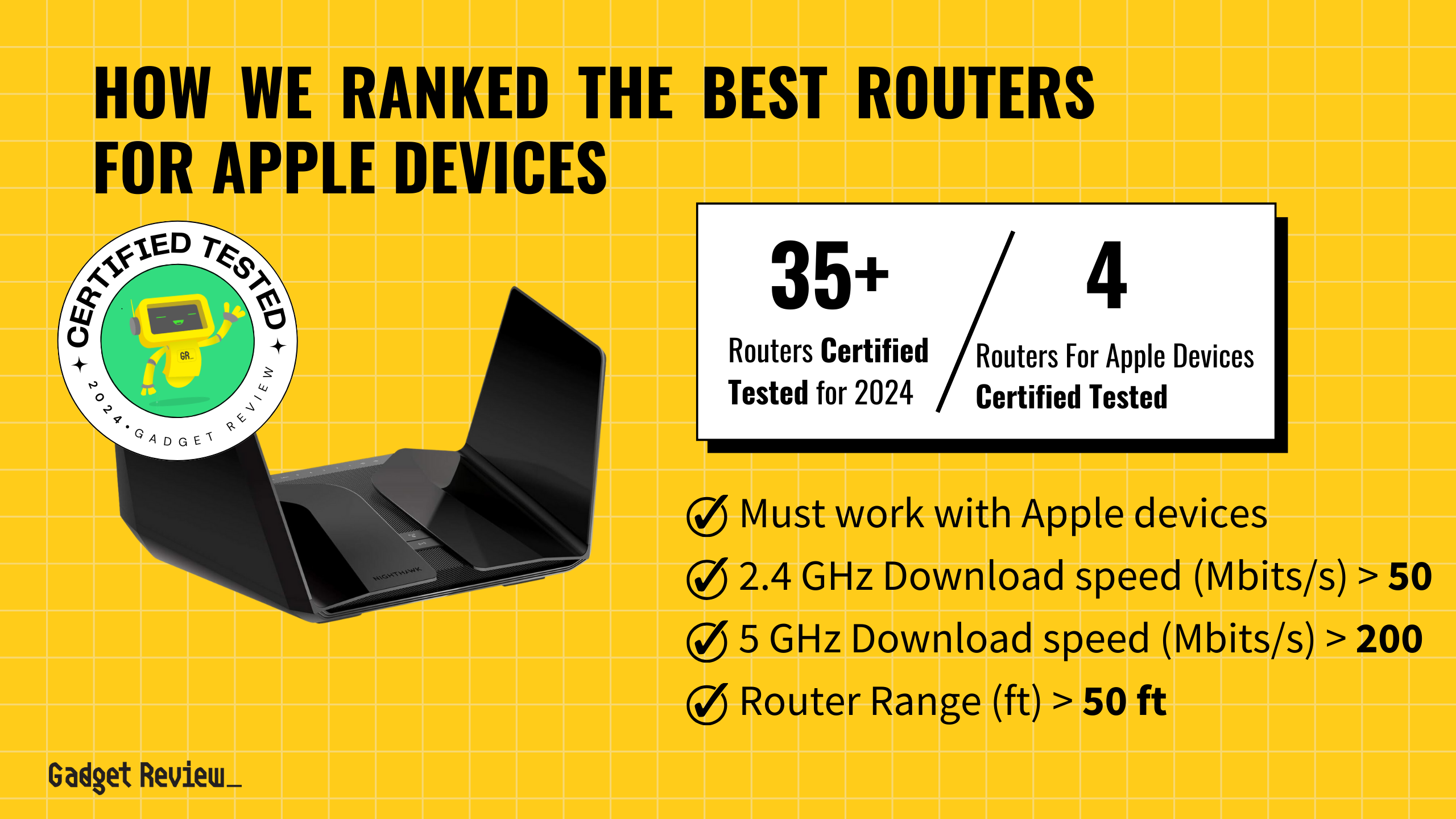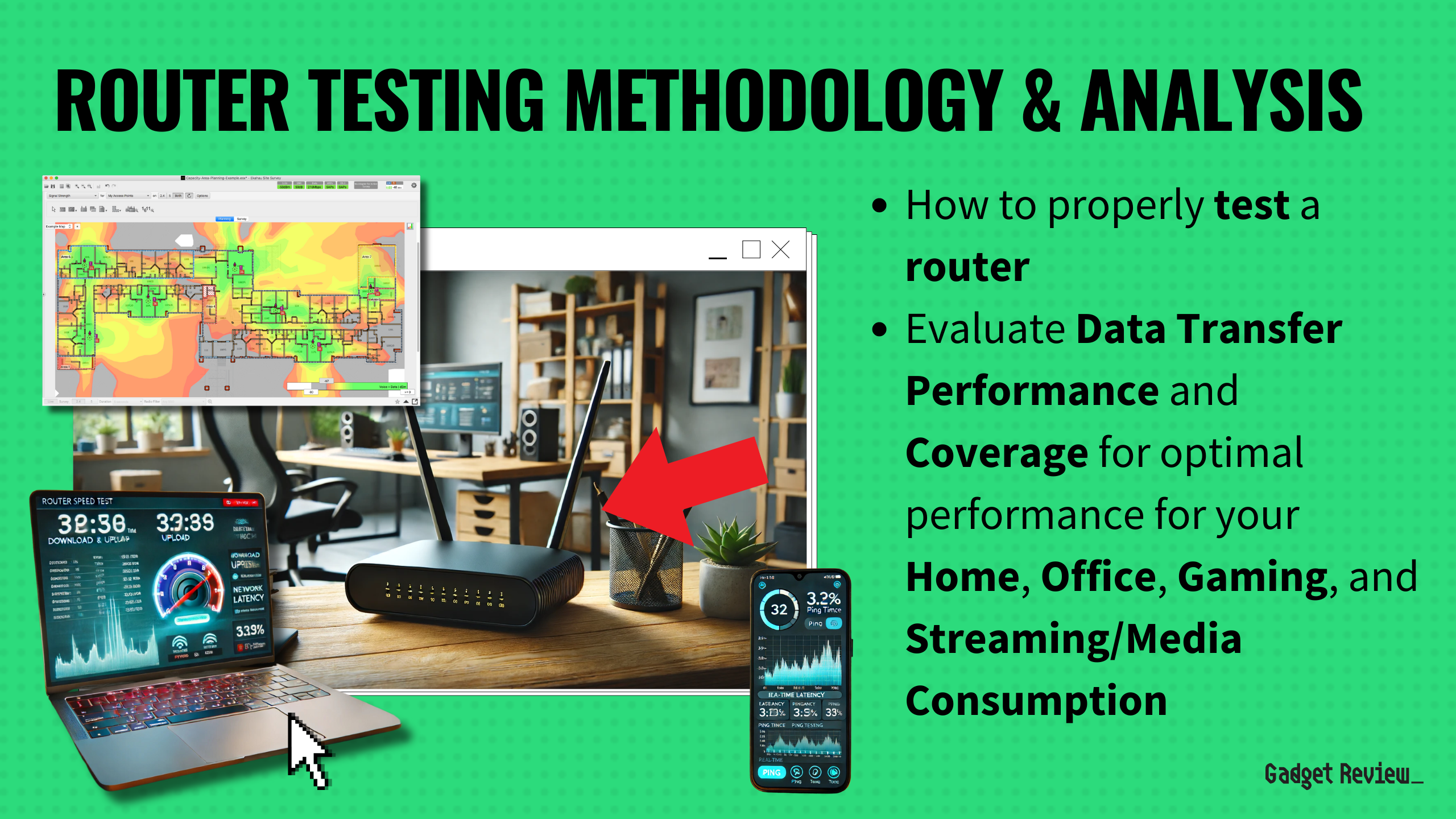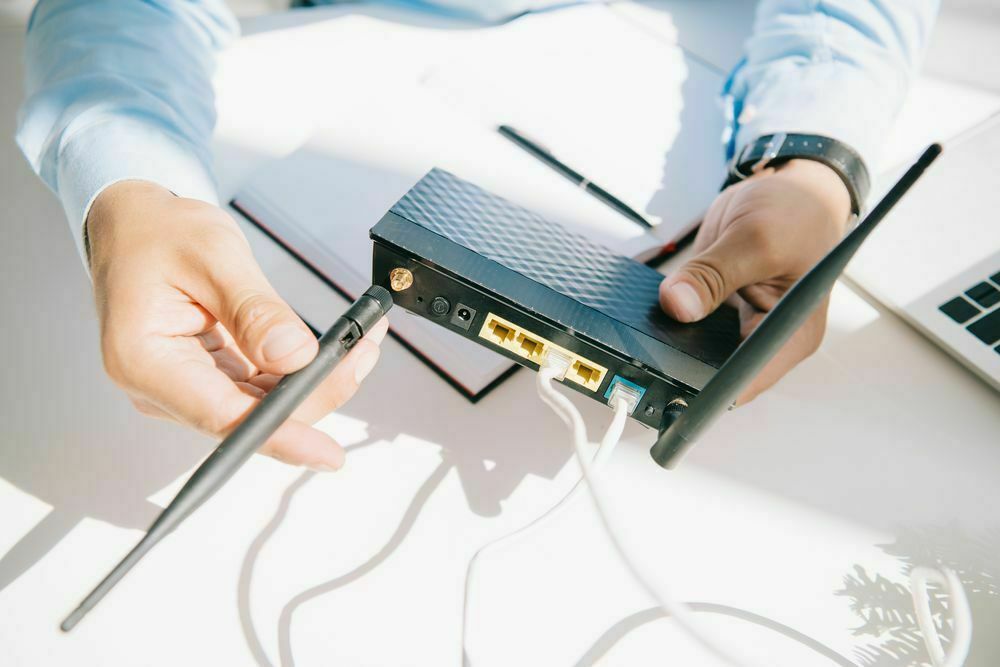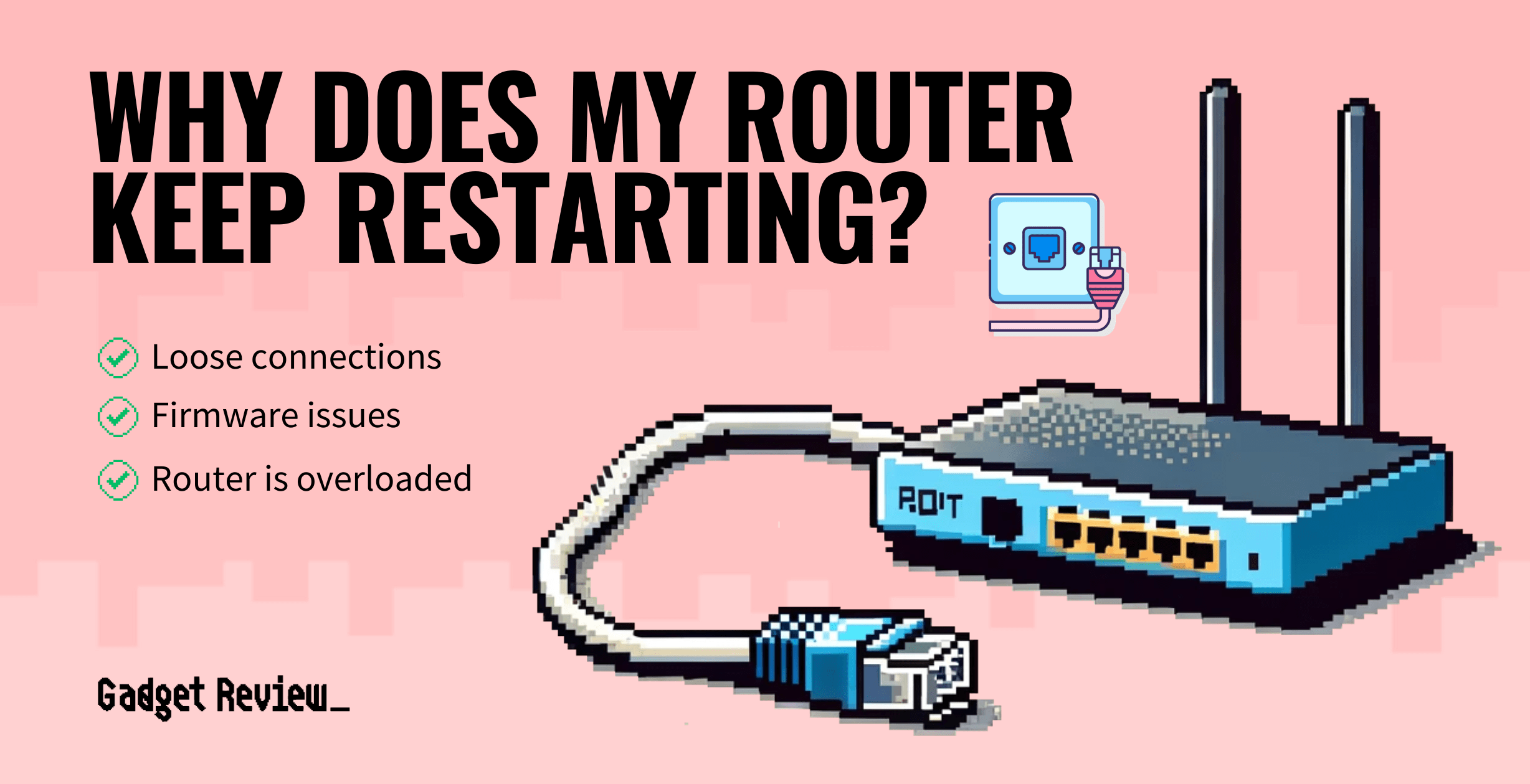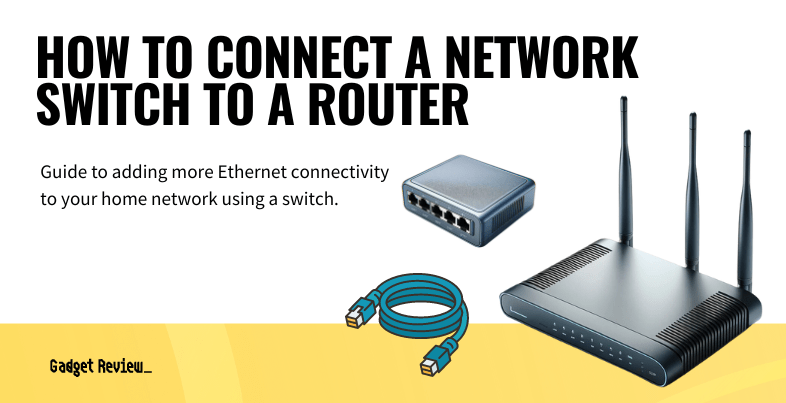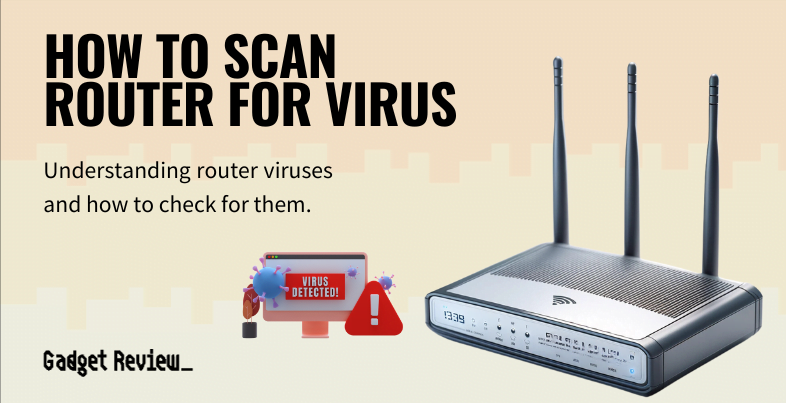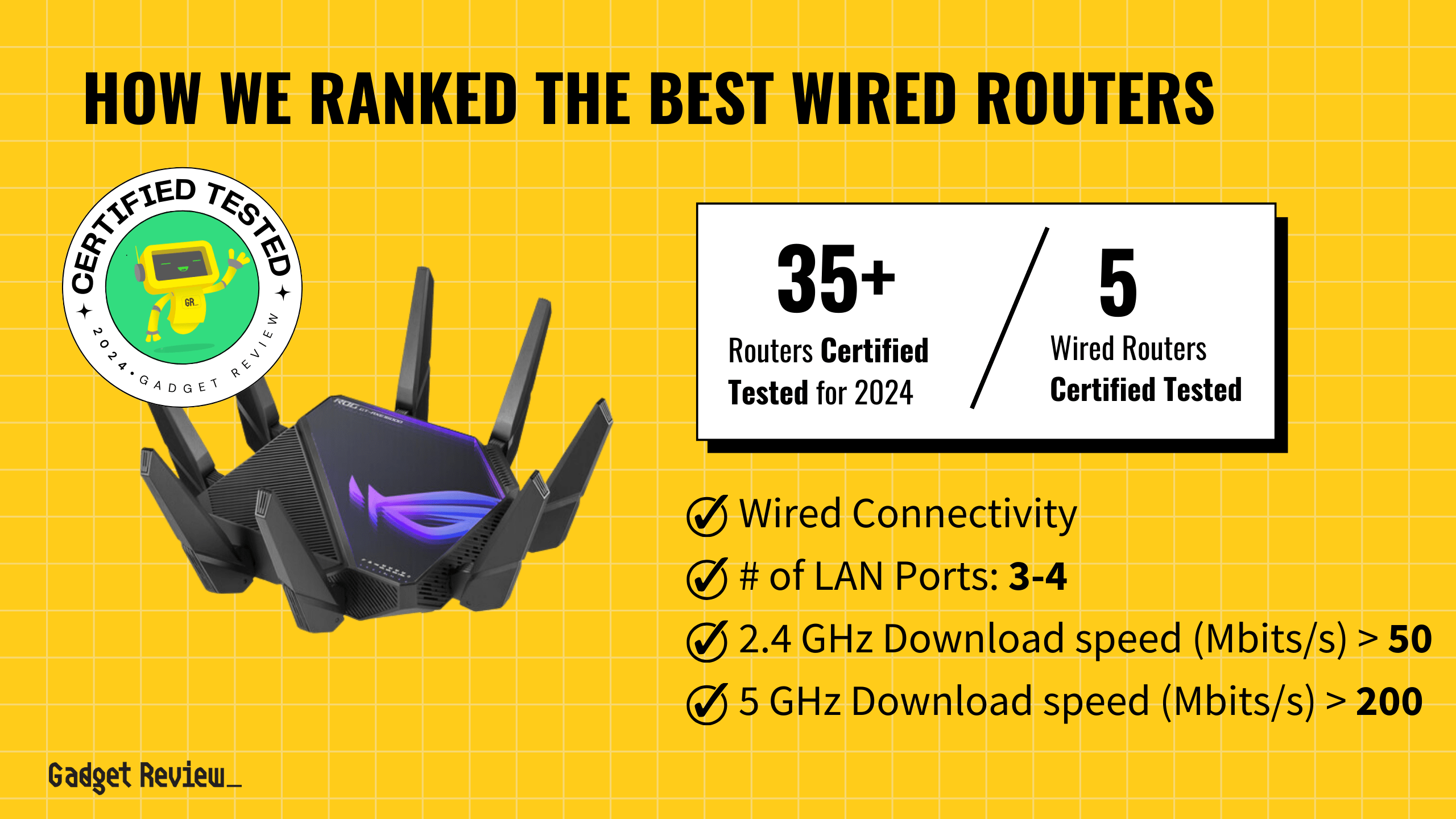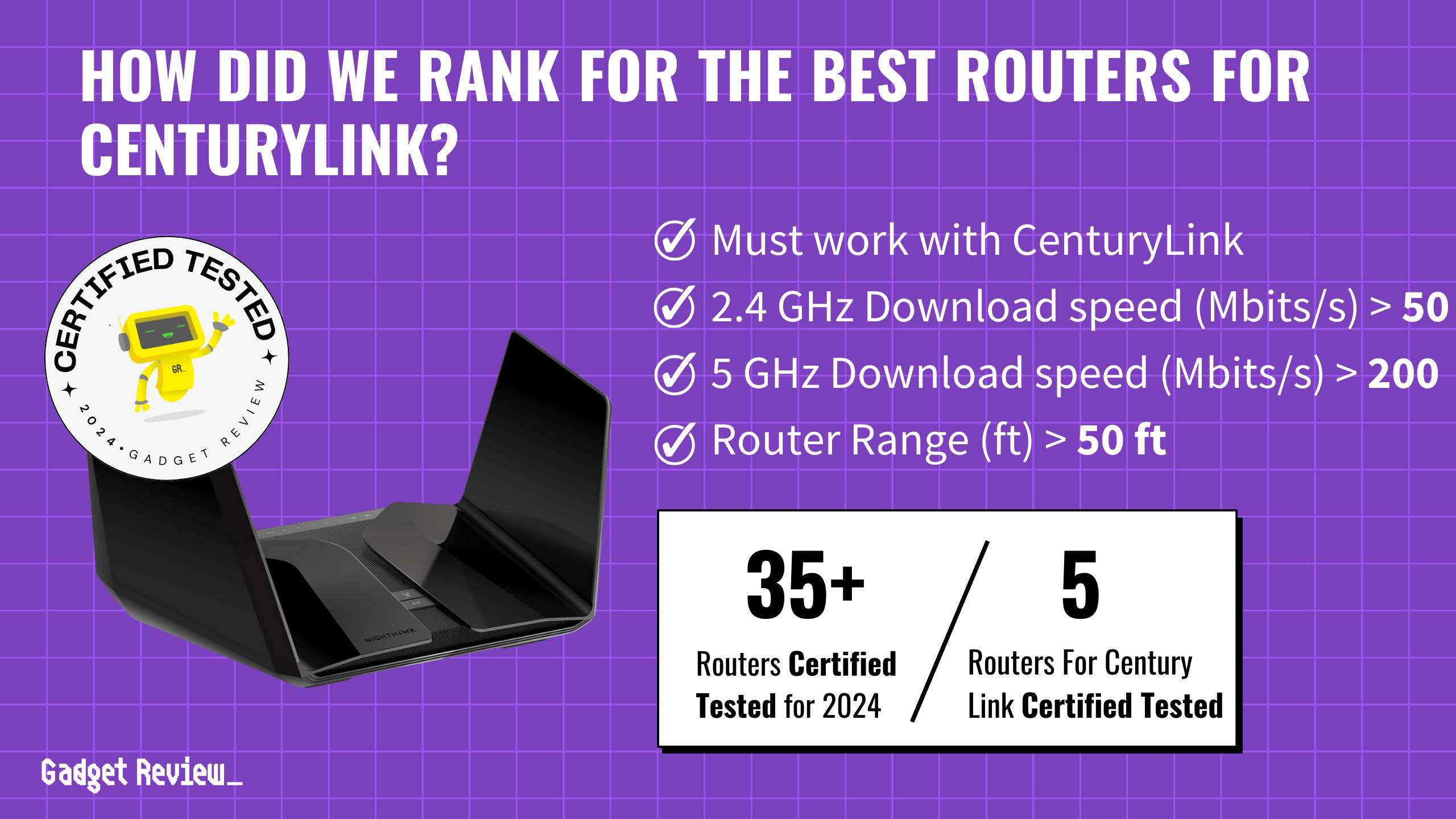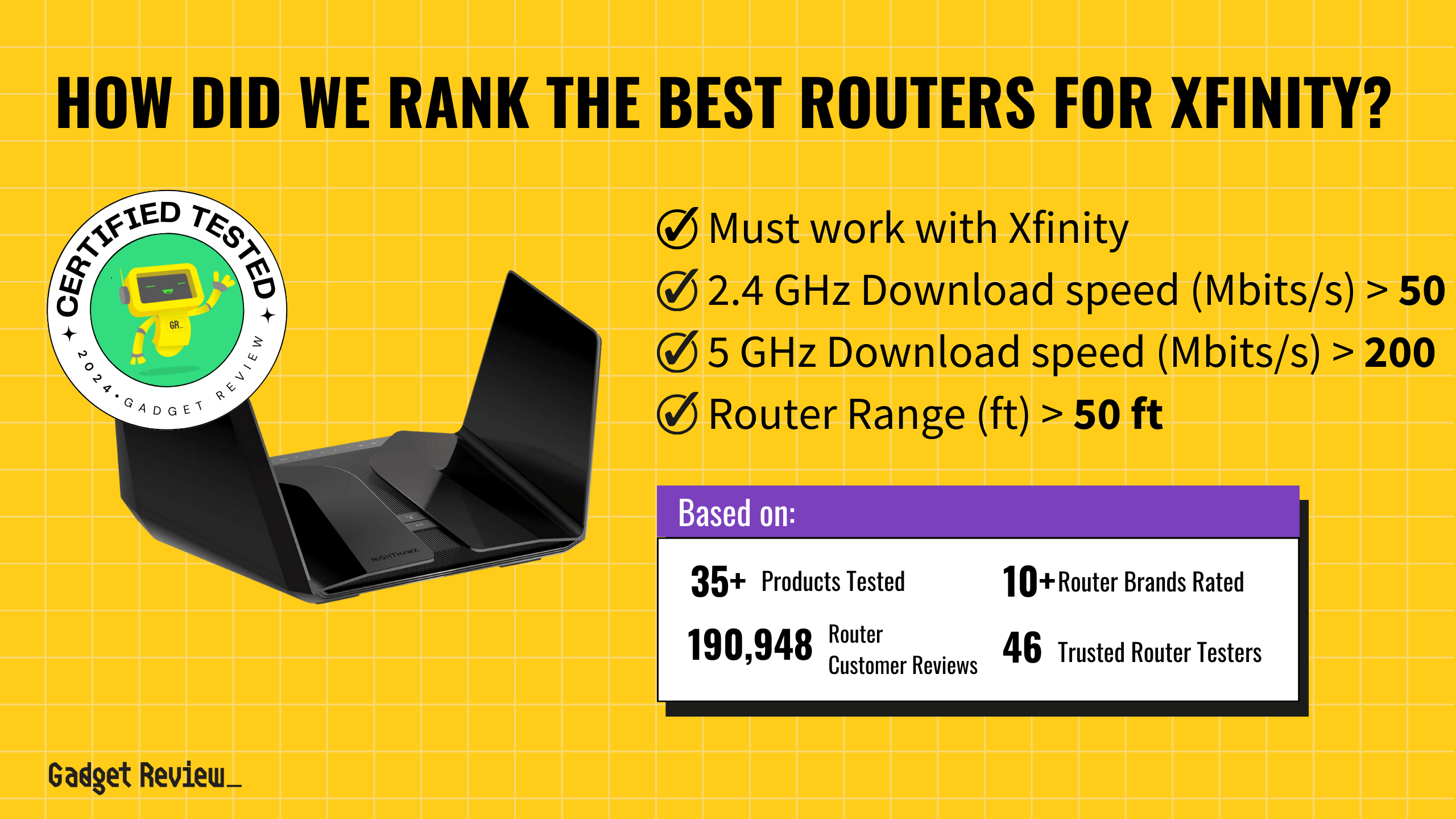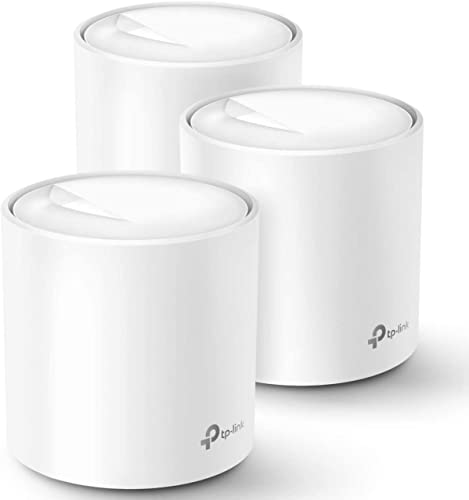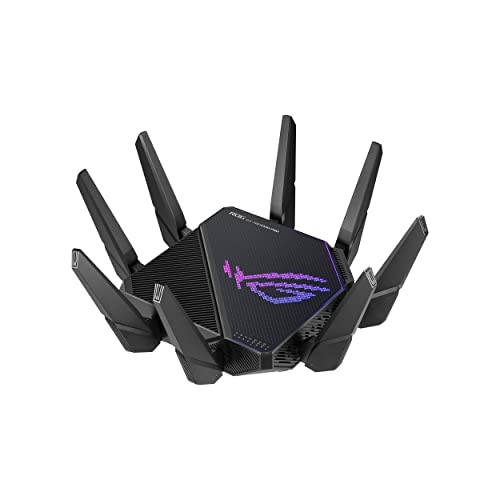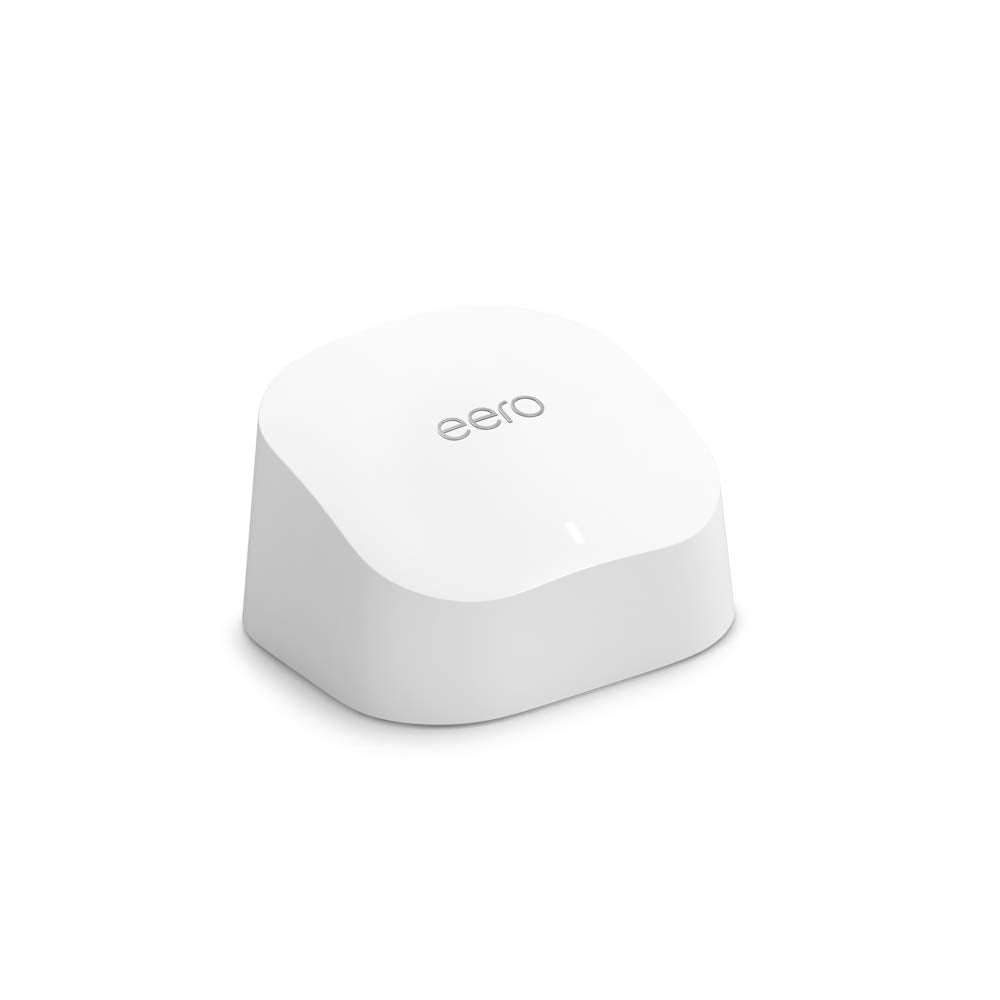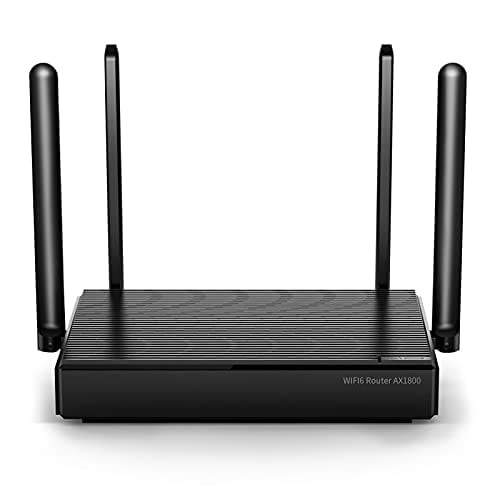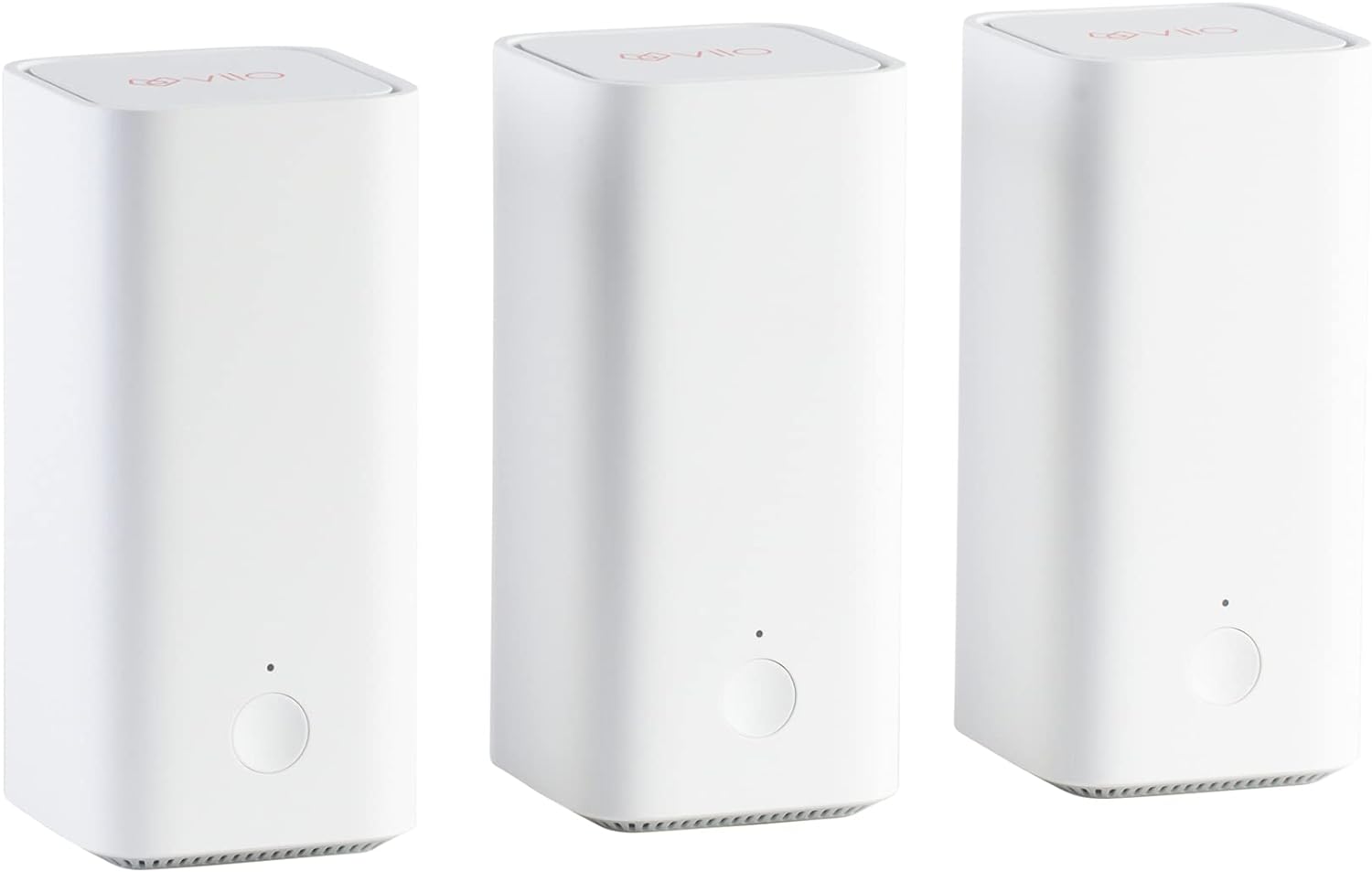Compatibility and performance are top priorities when you’re hunting for the best routers to sync up perfectly with your Apple gear. Look for a router that supports both 2.4GHz and 5GHz bands, giving you at least 50 Mbps on the 2.4GHz and 200 Mbps on the 5GHz. You’ll want features like low latency, Quality of Service (QoS) to manage your bandwidth, and MU-MIMO for handling multiple connections at once.
Out of 37 routers evaluated, four stood out, verified as tested, and performed well in our assessments. We analyzed 192,591 reviews, filtering out those from experts who weren’t trustworthy. Our approach uses our proven True Score to certify and verify products, ensuring only the best routers make our buying guide. These routers excelled in reliability, speed, and ease of use, making them top choices for Apple users.
How Did We Rank the Best Routers for Apple?
After analyzing more than 200 websites, we compiled our guide on the best routers for Apple devices, focusing on rigorous testing methods and customer feedback. We identified 2 required test results, 2 nice-to-have test results, and 1 must-have specification, ensuring that our recommendations cater specifically to the needs of Apple users. Our thorough evaluation and expert review synthesis provide you with a precise and reliable resource to find the perfect router for your Apple ecosystem.
Our commitment to unbiased reviews is powered by our ‘True Score’ system, targeting low quality and fake reviews. When you shop through our links, you’re backing our mission. Dive deeper to see how.
Minimum Specifications
- Must work with Apple devices.
Test Criteria
- 2.4 GHz Download Speed: A download speed on the 2.4 GHz band of at least 50 Mbits.
- 5 GHz Download Speed: A download speed on the 5 GHz band of at least 200 Mbits.
? “Nice To Haves”
- Router Range: A range of at least 50 feet before the signal from the router begins to become noticeably weaker.
- Latency: A latency of 30 ms or less.
Latest Updates
- 06/17/2024: Republished the list to include the best routers for Apple devices based on our True Score system.
Top Routers for Apple For 2025
Prices accurate at the time of publishing

Best Overall

Runner Up

Best Value

Best Budget

Best Mid-Range

Premium Pick
Netgear Nighthawk RAXE300
Best For Apple
With outstanding speed and range and a user-friendly setup, the Nighthawk RAXE300 is ideal for Apple-heavy homes. It offers robust performance and future-proofing with 6 GHz support.
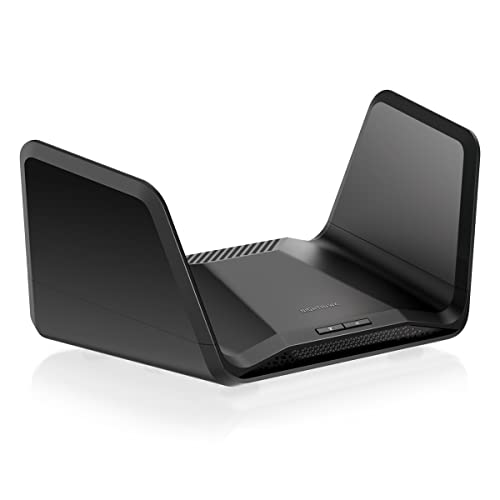
True Score
85839Experts
904kCustomers
Absolutely Fresh
 SAVE $60$209.97$150.00
SAVE $60$209.97$150.00Read More
Snapshot
Reasons to Buy
- Superb Wi-Fi speeds
- Wide range
- Simple setup
Reasons to Avoid
- Limited range (6GHz)
- No USB A port
- Subscription-based security solutions
Specifications

# of LAN Ports 6 
Frequency Bands 2.4 GHz, 5.0 GHz, 6.0 GHz 
MU-MIMO Support Yes 
Wireless Standard AC, AX, N 
Mesh System No 
Quality of Service Prioritization No 
# of Phone Ports 1 
# of WAN Ports 1 
App Compatible Yes 
Available Storage 256MB 
Band Technology Tri 
Data Encryption Type WPA-PSK, WPA2-PSK, WPA3 
Energy Star Certified No 
Integrated Modem No 
LAN Port Speed 4 Gb Ethernet 
Number of Antennas 6 
Parental Controls Yes 
Processor Cores Quad 
Processor Speed 1.7GHz 
WiFi Range 2500 sq.ft 
WiFi Speed 7.8 Gb 
Wired Speed 1000 Mb All Specs
Test Results
2.4 GHz Download speed (Mbits/s) 222 5 GHz Download speed (Mbits/s) 852 6 Ghz Download speed (Mbits/s) 757 Latency (ms) 5 Router Range (ft) 170 2.4 GHz Upload speed (Mbits/s) 0 All Retailers
- $150.00$210Save $60
- $164.99$300Save $135
- $190.96$399Save $208
- $299.99
Our Verdict
The Netgear Nighthawk RAXE300 boosts your home internet speed and simplifies connectivity. Its top-tier 5 GHz download speed of 851.6 Mbits/s, coupled with an upload speed of 175 Mbits/s, makes it an outstanding choice if your home is full of Apple devices. Plus, the generous 170 ft range eliminates frustrating buffering and dead spots and means you won’t need an extender in most cases. The RAXE also supports the 6 GHz band, which provides an impressive 756.8 Mbits/s and 247.2 Mbits/s up, which not only future-proofs the router but gives you more upstream bandwidth for streaming on platforms like Twitch.
The RAXE300 is also straightforward to set up, meaning you don’t have to spend a ton of time configuring your router for your Apple ecosystem. The dedicated app simplifies the process and reduces how much time you’d spend on first-time setup. The MU-MIMO support also helps keep every device you connect to Wi-Fi running smoothly, with minimal interruptions in service. Plus, with a range of 170 feet and a latency of just 5 ms, the Nighthawk can cover a substantial part of a home and enjoy nearly lag-free connections while you use it.
If you’re looking for high performance and a user-friendly setup, the Nighthawk RAXE300 provides a reliable, high-speed internet connection while making the setup process as straightforward as possible. Whether you’re deep into tech or just looking for a reliable internet backbone for your many Apple products, this router delivers speed, coverage, and ease of use in one smart package.
Read Less

Best Overall

Runner Up

Best Value

Best Budget

Best Mid-Range

Premium Pick
Asus ROG GT6 Mesh
Best For Gaming
Delivers seamless, high-speed gaming and broad coverage, the ROG GT6 Mesh system is perfect for gamers needing reliable internet across all Apple devices, with easy setup and low latency.

True Score
83836Experts
864kCustomers
Absolutely Fresh
 SAVE $35$349.99$314.99
SAVE $35$349.99$314.99Read More
Snapshot
Reasons to Buy
- Fast Download/Upload Speed
- Easy to install and operate
Reasons to Avoid
- WiFi speed drops off at long range
- Connection range is limited
- Limited USB Connectivity
- Mediocre Latency
Specifications

# of LAN Ports 3 
Frequency Bands 2.4 GHz, 5.0 GHz 
MU-MIMO Support Yes 
Wireless Standard AC, AX, N 
Mesh System Yes 
Quality of Service Prioritization Yes 
# of Phone Ports n/a 
# of WAN Ports 1 
App Compatible Yes 
Available Storage 256MB 
Band Technology Tri 
Data Encryption Type WEP, WPA-Enterprise, WPA-PSK, WPA2-Enterprise, WPA3-Personal 
Energy Star Certified No 
Integrated Modem No 
LAN Port Speed 3 Gb Ethernet 
Number of Antennas 9 
Parental Controls Yes 
Processor Cores Triple 
Processor Speed 1.7GHz 
WiFi Range 5800 sq. ft 
WiFi Speed 2.6 Gb 
Wired Speed 2500 Mb All Specs
Test Results
2.4 GHz Download speed (Mbits/s) 139 5 GHz Download speed (Mbits/s) 701 6 Ghz Download speed (Mbits/s) 0 Latency (ms) 22 Router Range (ft) 95 2.4 GHz Upload speed (Mbits/s) 112 All Retailers
- $314.99$350Save $35
- $335.99$350Save $14
Our Verdict
If you prioritize seamless gaming alongside unified coverage across your home for your Apple devices, the Asus ROG GT6 Mesh ensures your internet connection keeps pace with your demands. Its 2.4 GHz download speed reaches 139.35 Mbits/s, while the 5 GHz speed soars to 701.3 Mbits/s, offering you a smooth and stable online experience without interruptions.
The ROG GT6 Mesh’s setup process is straightforward, allowing you to quickly move from unboxing to online action. Through its setup app, you can simplify the entire process down to a set of on-screen prompts and have a home-wide mesh network up and running in minutes.
For gamers and heavy internet users, the ROG GT6 Mesh delivers a robust connection that’s essential for real-time online gaming and high-quality streaming, with the units reaching out 95 feet before degrading in quality, and they do this with a latency of just 22ms. If you’re interested in reducing latency even more and saving a few bucks while you’re at it, the Netgear Nighthawk RAXE300 has a latency of just 5 ms – but you won’t get the benefits of a mesh network out of the box since the Nighthawk is just a single router.
This mesh system is specifically tailored for environments where consistent and reliable internet performance is critical. With the Asus ROG GT6 Mesh, you receive a network solution supporting the entire Apple ecosystem, providing extensive coverage, high-speed connectivity across your home, and fantastic gaming performance.
Read Less
Did you know 64% of router reviewers are untrustworthy?
Our research found only 46 of 127 router reviewers as of December 2025 can be trusted. This is why Gadget Review is committed to calculating the most accurate product scores on the web.
To do this, we give every router review site a Trust Rating, which measures how trustworthy the site and their testing claims are. We then leverage AI & a machine learning model to combine and calculate the Trust Rating with data from experts and consumers to deliver the True Score, the web’s most accurate product quality rating.
 192,591
192,591Router Reviews Analyzed

37
Total Products Analyzed

Best Overall

Runner Up

Best Value

Best Budget

Best Mid-Range

Premium Pick
Eero Max 7
Best For Mesh
It sets a high bar for mesh networks with exceptional speeds and easy expansion, making the Eero Max 7 perfect for tech-savvy homes or small offices filled with Apple devices despite its premium price.
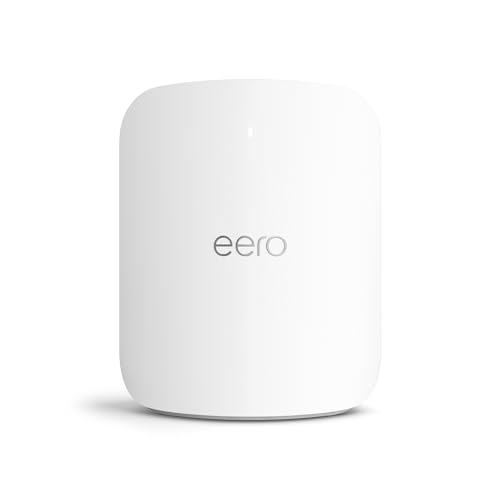
True Score
82807Experts
87926Customers
Absolutely Fresh
 $599.99
$599.99Read More
Snapshot
Reasons to Buy
- Exceptional Download WiFi Speed
- Easy Installation and Configuration
- Low Latency
Reasons to Avoid
- Poor 2.4 GHz Upload Speeds
- Short Range of Coverage
- Limited Port Space
Specifications

# of LAN Ports 4 
Frequency Bands 2.4 GHz, 5.0 GHz, 6.0 GHz 
MU-MIMO Support Yes 
Wireless Standard BE 
Mesh System Yes 
Quality of Service Prioritization No 
# of Phone Ports n/a 
# of WAN Ports 1 
App Compatible Yes 
Available Storage 4000MB 
Band Technology Tri 
Data Encryption Type WPA2-Personal, WPA3-Personal 
Energy Star Certified No 
Integrated Modem No 
LAN Port Speed 2 Gb Ethernet 
Number of Antennas 10 
Parental Controls Yes 
Processor Cores Quad 
Processor Speed – 
WiFi Range 2500 sq.ft 
WiFi Speed 4.3 Gb 
Wired Speed 10000 Mb All Specs
Test Results
2.4 GHz Download speed (Mbits/s) 96 5 GHz Download speed (Mbits/s) 1,078 6 Ghz Download speed (Mbits/s) 1,223 Latency (ms) 7 Router Range (ft) 90 2.4 GHz Upload speed (Mbits/s) 75 All Retailers
- $599.99
- $599.99
- $599.99
Our Verdict
If you’re after a premium mesh network that can support the full run of Apple’s many products, the Eero Max 7 is designed to do just that. Its standout feature is the exceptional 5 GHz download speed of 1078.5 Mbits/s, setting a new benchmark for mesh systems in delivering high-speed internet access across multiple devices. This speed ensures that whether you’re streaming, gaming, or engaged in video conferences, your experience is smooth and buffer-free. It doesn’t slouch with upload speeds either, reaching an incredible 410.6 Mbits/s, meaning you can upload just about anything, from streaming video to huge files, without seeing a hiccup in your connection.
On top of the support for 5GHz, the Max 7 also supports the 6GHz band, which helps improve its longevity in the long term. With download speeds that hit 1222.5 Mbits/s and upload speeds of 638 Mbits, the Max 7 offers unparalleled speeds on this band, guaranteeing buffer-free high-quality streaming across all your Apple devices, whether watching Netflix or streaming on Twitch. Plus, with a range of 90 feet per unit and a latency of just 7 ms, you can expand the network to fit just about any home with minimal lag.
The Eero Max 7 is a mesh network designed to be extremely simple. The first Eero is easy to set up thanks to the app Eero offers, and every Eero attached to the mesh after that is even simpler thanks to the expandable design of the Eero’s mesh network.
It should be said that this router is expensive. It’s among the most premium options on our list, but for the money, you get a mesh solution that meets your demands for ultra-high-speed, reliable internet across a large area. The Max 7’s combination of easy setup, extensive coverage, and exceptional speed makes it an excellent choice for homes or small offices, no matter how many devices you have—that includes all of your Apple devices.
Read Less

DON’T SEE WHAT YOU’RE LOOKING FOR?
When looking for the best router for Google Fiber, it’s important to consider factors like speed, coverage, and compatibility. Reviews like the Asus ROG GT6 mesh review can provide insights into high-performance options. Deciding between a WiFi repeater vs router often depends on your specific needs; repeaters extend existing networks, while routers can create new ones.
If you wonder, “Why does my router keep disconnecting?” it could be due to interference, outdated firmware, or hardware issues. Learning how to access a router remotely can help manage and troubleshoot these issues efficiently, ensuring a stable and secure connection.

Best Overall

Runner Up

Best Value

Best Budget

Best Mid-Range

Premium Pick
TP-Link Archer AXE75
Best For Wired
Offers solid performance at a budget-friendly price, the Archer AXE75 is great for smaller spaces, providing a straightforward setup and reliable connectivity for all your Apple devices.
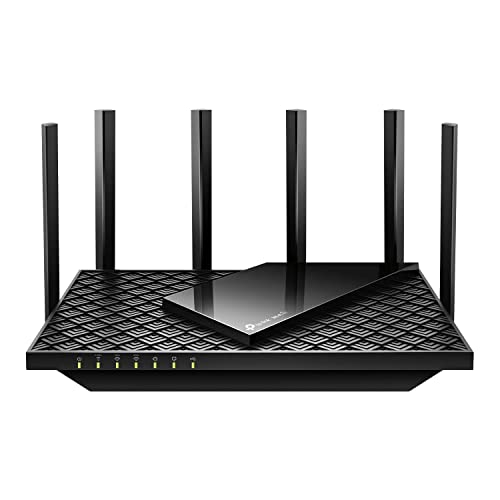
True Score
81804Experts
852kCustomers
Absolutely Fresh
 SAVE $84$199.99$116.00
SAVE $84$199.99$116.00Read More
Snapshot
Reasons to Buy
- Good WiFi speeds
- Adequate range
- Simple set up
Reasons to Avoid
- Average download speeds
- Limited coverage
- Subscription-based security solutions
Specifications

# of LAN Ports 4 
Frequency Bands 2.4 GHz, 5.0 GHz, 6.0 GHz 
MU-MIMO Support Yes 
Wireless Standard AC, AX 
Mesh System Yes 
Quality of Service Prioritization Yes 
# of Phone Ports n/a 
# of WAN Ports 1 
App Compatible Yes 
Available Storage n/a 
Band Technology Tri 
Data Encryption Type WPA3 
Energy Star Certified n/a 
Integrated Modem No 
LAN Port Speed Gigabit Ethernet 
Number of Antennas 6 
Parental Controls Yes 
Processor Cores Triple 
Processor Speed 1.7GHz 
WiFi Range 2500 sq.ft 
WiFi Speed 2.4GHz 
Wired Speed 1000 Mb All Specs
Test Results
2.4 GHz Download speed (Mbits/s) 65 5 GHz Download speed (Mbits/s) 309 6 Ghz Download speed (Mbits/s) 318 Latency (ms) 9 Router Range (ft) 60 2.4 GHz Upload speed (Mbits/s) 0 All Retailers
- $116.00$200Save $84
- $116.00$180Save $64
- $159.00
Our Verdict
If you’re looking for a budget router that will let you connect all your Apple devices, the TP-Link Archer AXE75 stands out for those who need a reliable internet connection that doesn’t compromise on speed, especially in compact spaces or smaller homes. Its 5 GHz download speed of 309.1 Mbits/s provides a solid foundation for everyday online activities like HD streaming, video calls, and gaming.
If the 60-foot range isn’t enough for your needs, Netgear’s Nighthawk RAXE300 offers nearly triple that, along with better speeds and latency (5ms versus the AXE75’s 9ms), but it also costs a hundred dollars more.
One of the Archer AXE75’s strengths is its straightforward setup, which uses TP-Link’s setup app to get the router up and running. The process takes just a few steps to get through, and you’ll have every device you need connected to your network up and running in minutes, including your Apple devices.
The AXE75 is a practical choice, with its low cost, solid performance, and ease of use. Its simple setup makes it a straightforward budget pick that does exactly what you need it to without sacrificing much-needed speed and coverage, especially if you’re in a smaller home or apartment and hoping to connect every Apple product you own to your network.
Read Less
Which Criteria Matters for Testing Best Routers for Apple?
By focusing on these criteria (2 required, 2 nice to have), anyone can quickly and easily compare these routers and how they’ll perform. This helps you make an informed decision and purchase a router that will meet your needs.
| CRITERIA | RANGE | REQUIRED | DEFINITION |
|---|---|---|---|
| 2.4 GHz Download Speed | > 50 Mbits/s | Yes | The maximum speed that the router can reach when downloading on the 2.4 GHz band. |
| 5 GHz Download Speed | > 200 Mbits/s | Yes | The maximum speed that the router can reach when downloading on the 5 GHz band. |
| Router Range | > 50 ft | No (Nice to have) | How far a device can be from a router before the signal starts degrading. It is worth noting that 2.4 GHz reaches further than 5 GHz. |
| Latency | < 30 ms | No (Nice to have) | The delay that is created by a signal being sent by the router and then received. |
Our Trusted Data Sources
We looked at 120+ router reviewers and found that 46 are trustworthy (60%+ Trust Rating). The three we have listed below are our most trusted for routers.
- James Morris – Kit Guru, LinkedIn
- Matt Spencer – TechGearLab, LinkedIn
- Brian Nadel – Tom’s Guide, MuckRack
Interested in a comprehensive analysis of our data sources? We’ve got you covered. Below, you’ll find a detailed list of every router review website we’ve identified, organized by their respective Trust Ratings from highest to lowest. But we didn’t stop there. We’ve meticulously reviewed each publication and verified the data by checking whether the authors have bio links to MuckRack or LinkedIn. We’re committed to not only checking the facts but ensuring their veracity.
Router Test Data & Results
Disclaimer:
Evaluating router performance is more than hardware analysis. While hardware tests are straightforward, the challenge lies in contextualizing the results within the limits of real-world usage. Routers operate under conditions that testers cannot fully standardize, including variations in Internet Service Providers (ISPs), network traffic congestion, discrepancies between advertised and actual internet speeds, and the physical layout of homes. These factors introduce a degree of unpredictability, making it hard to draw universal conclusions. As such, our router recommendations aim to provide useful general guidance, accommodating a wide range of home environments and internet setups.
1. 2.4 GHz Download Speed (Mbits/s)
The oldest and slowest of the bands on a router is the 2.4 GHz band, but it sticks around for a reason. Generally speaking, while this band features the slowest available speeds and has the lowest bandwidth, but also reaches out the furthest. It’s not the best band to connect to connect if you need high speeds, but if you just need to be connected for light browsing or anything that’s low bandwidth, it works. Alternatively, if you own a lot of old devices, this band may be the only band they can “see” and therefore, use.
Given the age of the band, top speeds on 2.4 GHz cap out very quickly. We recommend a speed of at least 50 Mbits/s, but if you aren’t really going to be using this band for anything other than checking web pages, you can go lower. It’s worth noting, though, that this might lead to a more frustrating and laggier time on modern sites with lots of scripting and high-quality images.
2.4 GHz Download Speed
> 50 Mbits/s
Acceptable range of performance
Definition: The top speed the router reaches downloading on the 2.4 GHz band.
Units of Measurement: Mbits/s (megabits per second)
Tools to Measure: Speed-checking software
Why It’s Important:
For older devices or for connecting at a longer range, the 2.4 GHz frequency is the only one that you’ll be able to use, so it should have usable speed.
2.4 GHz Download Speed (Mbits/s; higher is better; 0 = No Data)
2. 5 GHz Download Speed (Mbits/s)
The much faster 5 GHz band offers up much greater bandwidth and is much, much better at meeting high-speed demands. Streaming high-quality video, using streaming services, gaming, downloading large files and games – the 5 GHz band is what makes all of these activities quick and bearable. It reaches a lower range than the 2.4 GHz band, but it’s also much faster, so you’ll use it more, especially on newer devices that actually support the band.
Given how much you’ll be using this band, we recommend a speed of at least 200 Mbits/s to ensure you’re able to enjoy streaming and gaming on at least a few devices simultaneously. Any lower and you start to run into real bottleneck concerns, such as endless buffering, lagging, or drops in connection.
5 GHz Download Speed
> 200 Mbits/s
Acceptable range of performance
Definition: The top speed the router reaches downloading on the 5 GHz band.
Units of Measurement: Mbits/s (megabits per second)
Tools to Measure: Speed-checking software
Why It’s Important:
This band is used by most modern devices and offers greater speeds that enable activities like gaming and HD streaming on multiple devices.
5 GHz Download Speed (Mbits/s; higher is better; 0 = No Data)
3. Router Range (ft)
Router range is exactly what the name suggests: how far can you get from the router before you start experiencing issues with your connection? The complicating factor is the simple fact that range depends on the band you’re using. 2.4 GHz is a band that offers greater range, so it gives tests results that show a greater range than tests that use the 5 GHz band. In general, our research found most publications used the 5 GHz band, so our recommendations are based on that.
As such, we recommend your router have a range of at least 50 ft. This gives you a good “bubble” around the router that you can connect to, but it’s important to know that things like the walls in your home can cause issues. Thicker walls block more signal, thinner walls block less. Some materials will also do a better job than others will at stopping signal, so if you see a router with a range of 65 ft, know that it might not reach that far in your home. It could reach further – or not nearly as far. This is also why you get dead zones in your home – it’s a matter of geometry and materials.
Router Range
> 50 ft
Acceptable range of performance
Definition: The distance the router transmits reliable signal out to before performance and speed degrades.
Units of Measurement: Feet (ft)
Tools to Measure: Measuring Tape
Why It’s Important:
Range impacts how far you’ll get a reliable connection in your home, and whether you’ll need extenders or not.
Router Range (ft; higher is better; 0 = No Data)
4. Latency (ms)
Latency
< 30 ms
Acceptable range of performance
Definition: The time it takes for the router to send and then receive signals.
Units of Measurement: Milliseconds (ms)
Tools to Measure: Speed-checking software
Why It’s Important:
Latency is important to reduce delay when gaming and video conferencing.
On a router, latency refers to how long it takes for the router to send out and receive a signal. The longer it takes, the more delay there is between you sending and receiving data, which can introduce lag in video games and also makes video conferencing harder since the person you’re speaking with now has to contend with your delay and vice versa. If you’ve ever spent a call talking over someone because you don’t know they started talking a second ago, that’s latency.
For that reason, we recommend a latency below 40 ms. As low as you can get it is obviously preferable, but latency is another aspect of your internet connection that is hard to manage. Latency differs to every single place you connect to, and every ISP has its own latency they “add” because you have to connect to their service too. Latency creeps in from your ISP, from the site you’re requesting data from, from your router, and from your own onboard Wi-Fi antenna – and that’s just to name a few sources. If you’re gaming, you also have a delay introduced by your connection to game servers and the delay that exists on a hardware level when you input commands.
Latency (ms; lower is better; 0 = No Data)
Best Routers for Apple: Mistakes To Avoid
- Lack of MU-MIMO Support: Multi-User, Multiple Input, Multiple Output (MU-MIMO) technology enables simultaneous data transmission to multiple devices, essential for households with several Apple devices.
- Insufficient Coverage: Avoid routers with limited range that may result in dead zones within your home or office. Look for routers with robust coverage and support for mesh networking for seamless connectivity.
- Neglecting Security Features: Protect your Apple devices from cyber threats by choosing routers with robust security features like WPA3 encryption, built-in firewalls, and automatic firmware updates.
- Ignoring Brand Reputation: Stick to reputable router brands, such as Netgear, TP-Link, and Asus. These brands are known for reliability and customer support, ensuring compatibility and longevity with your Apple devices.
The Best Routers for Apple Tests Compared
Product |
True Score
|
2.4 GHz D/L Speed
|
5 Ghz D/L Speed
|
6 GHz D/L Speed
|
Range
|
Latency
| |
|---|---|---|---|---|---|---|---|
| 85 |
|
|
|
|
| $150.00 $210 $60 |
| 83 |
|
|
|
|
| $314.99 $350 $35 |
| 82 |
|
|
|
|
| $599.99 |
| 81 |
|
|
|
|
| $116.00 $200 $84 |


